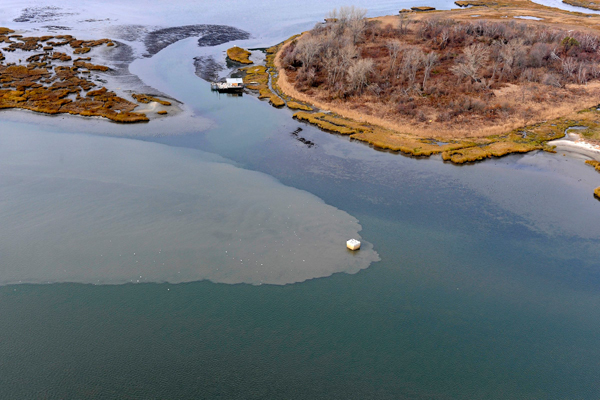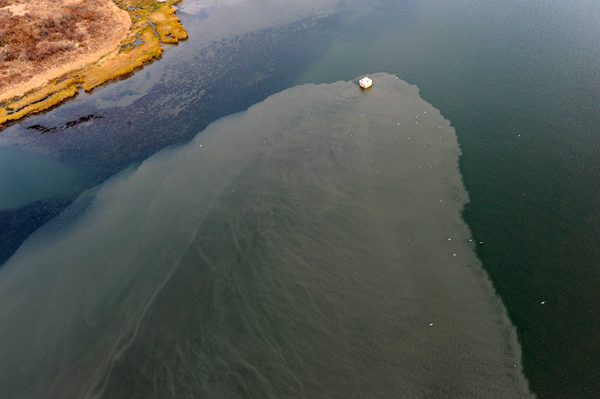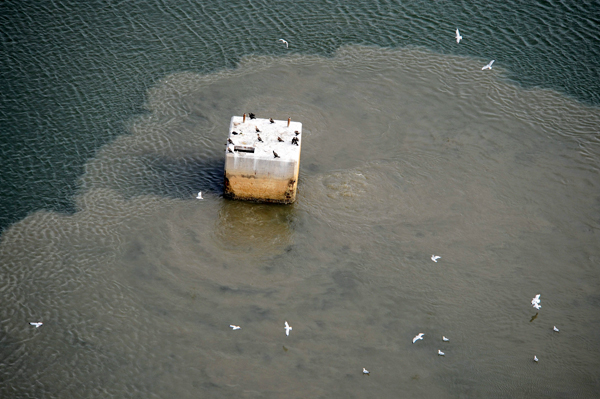<<Back to "New York Sea Grant Responds to Superstorm Sandy" Mainpage
Two important Sandy-related projects have been selected and are already beginning:
How will the breach on Fire Island at Old Inlet impact Great South Bay and surrounding communities?
Sandy’s storm surge and high waves caused breaches across eastern Fire Island but the one likely to have the greatest impact on the back bay areas of Great South Bay is at Old Inlet, a narrow part of the island with a long history of breaches and inlets. How this breach will evolve and what attendant impact it will have on the back bay and mainland of Long Island are the questions facing the National Park Service and nearby residents on the mainland. This research team from the School of Marine and Atmospheric Sciences at SBU is gathering bathymetric data needed to determine the potential evolution of the inlet, including whether it is likely to close on its own or expand further, and how that evolution will affect the tidal dynamics, and eventually the biota, of the eastern Great South Bay. They have installed sensors for measuring sea level, temperature and salinity at Old Inlet, at Bellport marina, and at buoys in Great South Bay so that changes to sea level and tidal characteristics can be constantly monitored. Early reports after the November and December nor’easters indicate that the breach is remaining somewhat stable.
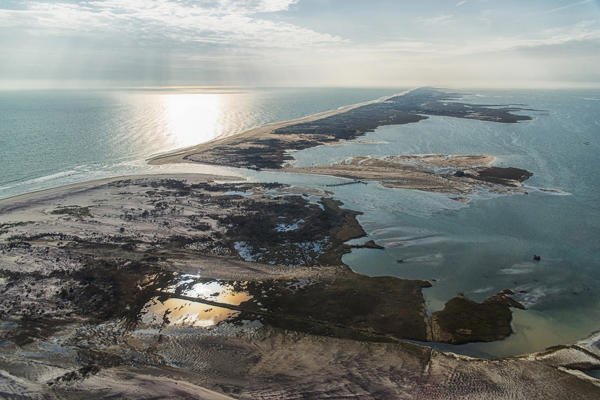
"Old Inlet" breach in Fire Island caused by Sandy. Photo by National Park Service
Will the Western Long Island South Shore Estuary ecosystem be able to handle the additional nitrogen from the failure of the Bay Park Sewage Treatment Plant?
A research team from CUNY is looking at the Western Long Island South Shore (WLISS) estuary where storm surge from Hurricane Sandy caused significant damage to the Bay Park Sewage Treatment Plant in East Rockaway, NY that treats 50-85 million gallons day of waste water from 40 percent of Nassau County residents. Immediately after the storm, an estimated 68 million gallons of raw sewage was released into the WLISS estuary. As repairs were underway in the ensuing weeks, partially treated sewage continued to be released bringing the total to more than a billion gallons. The team will measure if the ecosystem will increase its capacity to remove nitrogen or if the enhanced nitrogen loads will shift the ecosystem to an alternative state that perpetuates additional organic matter loading. Researchers expect significant increases in rates of sediment nitrogen and oxygen dynamics to occur. It is critical to begin measuring rates of dissolved nitrogen as soon as possible, so that the amount of nitrogen being removed from the ecosystem or internally recycled can be measured.

Storm surge from Hurricane Sandy caused significant damage to the Bay Park Sewage Treatment Plant in East Rockaway, NY (pictured above and below) that treats 50-85 million gallons day of waste water from 40 percent of Nassau County residents. Photos by Doug Kuntz,
Newsday
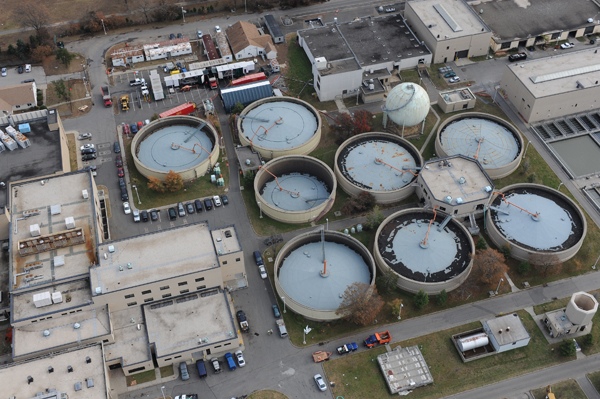
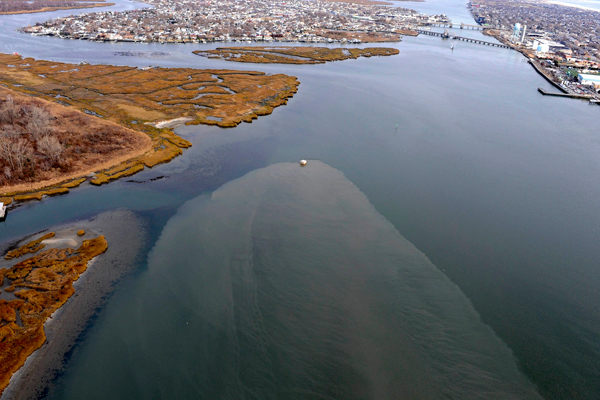
Immediately after the storm, an estimated 68 million gallons
of raw sewage was released into the Western Long Island South Shore
estuary (as pictured above and in the three photos below). Photos by Doug Kuntz,
Newsday
